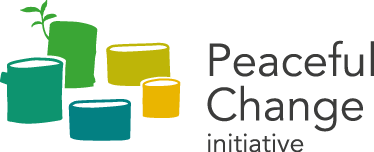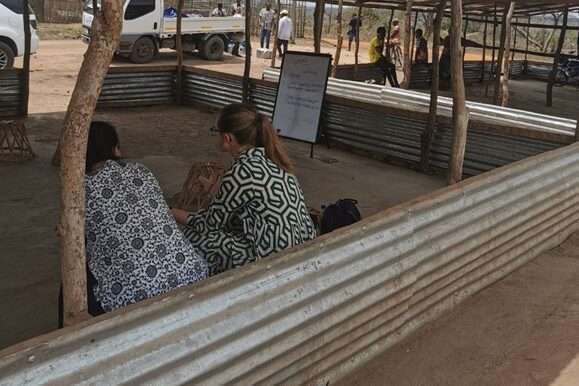The first step of conflict sensitivity is to understand the context. Without some understanding of the area in which aid is being delivered, it would be impossible to consider the ways in which activities might affect peace and conflict. So far so good, but most organisations’ response to this step is to commission a ‘conflict analysis’ – a report that aims to describe the peace and conflict context definitively and which represents the organisation’s understanding. In PCi’s experience, unfortunately, much conflict analysis is not fit for purpose, either because its purpose is poorly defined, its scope is too great and/or it is inadequately connected to the actual needs of programming decision makers.
Here we discuss some of the lessons PCi has learned about the role of conflict analysis in conflict sensitivity and how to improve understanding of context. You can also listen to us discuss the problems with conflict analysis and how to fix them in this podcast. This is not a how-to-guide for conflict analysis – there is much guidance already available – but rather a reflection on what we have seen working and what not.
Here are three analysis guides that we find particularly helpful and use in our work:
- The UN Sustainable Development Group’s 2016 Conducting a Conflict and Development Analysis Tool
- Saferworld’s Gender Analysis of Conflict Toolkit
- Chapters 2 and 3 of PCI’s Social Peace and Local Development in Libya Handbook for local government and community leaders, for its guidance on mapping relationships and assessing community needs
The problem with analysis
Over the years, we have identified a number of issues with the way organisations do analysis for conflict sensitivity. These issues undermine the effectiveness of the analysis and the objectives of conflict sensitivity in general.
People treat analysis as equivalent to conflict sensitivity
Conducting analysis to understand the context is one of the three conflict sensitivity steps. Yet, in our experience, many organisations fall into the trap of thinking that doing an analysis means that they are conflict sensitive.
Donors do this too. We have seen requirements in tender documents that projects are informed by a conflict analysis as a marker for conflict sensitivity, without reference to how that analysis should be used.
Unfortunately, without converting analysis into practical implications for aid activities – in other words, without understanding the purpose of analysis – then analysis becomes largely academic, project managers and donors see it as a tick-the-box exercise, and project teams are unlikely to embed conflict sensitive approaches into their work.
The scope of analysis is poorly defined
If analysis is to inform practical implications for aid activities, then it needs to be focused on answering the questions which lead to identifying those implications. Too often we see analysis trying to do too much. It attempts to be a definitive guide to conflict in an area or focuses on issues which might be important for peace and conflict but which have limited relevance to project activities.
During the civil war in Syria, conflict analysis was increasingly commissioned by aid organisations which were trying to understand how to operate in a complex conflict context and many organisations would engage analysts to produce reports. Many of these reports went into great detail about very interesting aspects of the conflict, such as the relationships between different armed groups. Unfortunately, this sort of information was not usable by aid organisations who were unable to influence or engage with those relationships.
It is understandable why this happens. Conflict analysis is an expert task and many analysts do not have direct experience of project implementation. But to be useful, conflict analysis needs to answer the questions which can inform the conflict sensitivity of programming and present that information in a way that is accessible and not overwhelming to aid decision makers – with specific, practical recommendations for action.
Analysis needs to happen earlier
Analysis takes time, particularly for activities working in new areas. Too often, we have seen organisations commission analysis at the start of a project only for it to be completed after key decisions have been made and after the implications of the analysis for programming can effectively be incorporated. The analysis then, at best, becomes an interesting document and, at worst, becomes an inconvenient evidence of poor programme design.
An understanding of the context needs to be developed at the very start of designing a project. This is hard, as often analysis takes money and expertise which are not readily available at the design stage of a project – in this instance, other solutions need to be found, either by accessing existing information or by incorporating an adequate inception phase written into the project in which key aspects of the programme can be redesigned after an analysis has been completed.
Thinking about the purpose of analysis
It is often said that understanding the context is the first step to conflict sensitivity. In reality, however, the first step of conflict sensitivity is understanding our own programming. Once we understand our programming we understand what questions we need to ask about the context.
Conflict analysis, at least the analysis done for conflict sensitivity, has a specific purpose, linked to our activities. It is intended to lead us to identifying what we need to do differently to minimise harms and maximise peace outcomes. 1 This defines the scope of what we need to know and, indeed, how much effort we need to put into it.
This is important because it is very easy to fall down a rabbit hole with conflict analysis. For those of us who are especially interested in peace and conflict, conducting analysis can be fascinating and we keep wanting to know more, asking increasingly detailed questions. For others, for whom conflict analysis is an additional task over programme management or other technical duties, it is difficult to know what is important to know and where we can stop. Like with the example of Syrian militias above, the analysis may be interesting but ultimately unhelpful. In these situations, it is important to come back to why we need to do analysis.
There are three reasons to do conflict analysis for conflict sensitivity:
- To give us a broad overview of key dynamics and the trajectory of conflict – so we can place things in context and consider the relevance and sustainability of our work;
- To identify the issues underpinning peace and conflict which our activities could worsen or improve – so we can identify interactions; and
- To give us an understanding of key conflict stakeholders who may be affected by, or seek to influence, our activities – so we can identify interactions and adaptations.
These are the reasons to do analysis, but it does not particularly matter how we get there. There are many conflict analysis methodologies which are suitable. However, preparing a formal conflict analysis is not what is important. If resources are limited, a process of reading and asking questions, or leveraging experience within your team can be just as effective.
What do we need to know for conflict sensitivity?
To develop our understanding of peace and conflict, so we can meet the purposes above, we need to be able to answer a few key questions. This table highlights some central questions and why these are important for conflict sensitivity.
Question | What an analysis could include | Why is this important for conflict sensitivity |
What is the history of peace and conflict in the area? | A review of the area and its experience of conflict over a relevant period of time. | Provides context and perspective to the rest of the analysis. |
What are the key issues driving peace and conflict? | A list of issues that contribute to peace or drive conflict. Ideally, understanding of these issues should describe both the issue as well as the mechanism by which it affects peace and conflict. | Activities can be reviewed to understanding which of these issues could be affected by them, either positively or negatively. |
Who are the key stakeholders in the area? | A list of the different actors who are affected by and involved in conflict, who they are and, ideally, their interests and capacity for pursuing those. Stakeholders may include governmental actors at different levels (national, regional, local), security or armed groups, economic actors, social or communal groups and beneficiaries. | This tells us which stakeholders may have an interest in how activities are delivered and could be supportive or opposed to activities. These are the actors who must be engaged, or managed, in order to implement activities in a conflict sensitive manner. |
What are the relationships between stakeholders and which issues affect these? | A review of the relationships between different stakeholders and which of the conflict issues affect those relationships. | Activities should be considered in terms of which relationships they may affect, either positively or negatively, and adjusted accordingly. |
What are the key threats/opportunities for conflict and peace? | A projection of the trajectory of conflict and what could happen to worsen or improve the situation in the near to medium term. | It is important to understand where things are headed – both to understand the relevance and sustainability of aid activities, but also to understand whether it is possible to undertake activities in a way that reduces threats and leverages opportunities. |
What happens if we do not have time to do analysis?
Conflict sensitivity practitioners often advise organisations to undertake a conflict analysis before designing activities. In our experience, this is ‘more honoured in the breach than the observance’ for two reasons. Firstly, as conflict analysis takes time and money, it is unlikely that will be available until after a donor has awarded funding, at which point activities have already been largely designed and delivery needs to begin straight away. Secondly, particularly in urgent humanitarian action, aid cannot wait for analysis.
In both circumstances, we still advise organisations to do analysis but we understand that, except in the most sensitive contexts, it should not get in the way of delivering needed assistance. However, that does not mean that organisations should ignore conflict sensitivity or ignore developing an understanding of peace and conflict issues.
Every aid organisation has, or has access to, local staff and partners with an understanding of the situation where aid is being delivered. Where there is limited time, or money, to undertake a detailed conflict analysis, there will still always be time to convene a meeting for a few hours to discuss the context and conflict sensitivity considerations arising out of that. Using the questions above as a framework for an informal discussion will often get a long way towards ensuring the team has a suitable understanding of the context to be conflict sensitive. It is important to consider who is around the table for these discussions, the more context expertise and diversity of experience and perspective, the better.
Often, convening such meetings will have more of an impact, in terms of conflict sensitivity, than commissioning a formal analysis. A collaborative approach within the team is more likely to lead to team members absorbing conflict sensitivity considerations and acting on them while undertaking their duties.
Maintaining understanding of the context
One problem with conducting formal conflict analysis is that it is a discrete action. A report is commissioned, researched and presented. More often than not, it is not subsequently revised.
However, peace and conflict is dynamic. Stakeholders, relationships and issues are always changing and, without being aware of these changes, can lead to unexpected conflict sensitivity interactions. Understanding the context is not something you only have to do once and then move on.
To be conflict sensitive, it is essential to have processes in place to review and update your understanding of the context. This could be a process for undertaking formal updates for conflict analysis completed by a conflict advisor. Often more effective is having regular meetings of the project team to discuss recent changes in the context, based around the questions identified above. These meetings can be formal or informal but should be regular and open discussions which bring as many team members together as possible so that they can use the information to inform their own actions.
Peaceful Change initiative continues to develop new tools and guidance in response to some of the gaps and weaknesses we see in current conflict sensitivity advice. We welcome feedback on our ideas and approaches and are happy to discuss these further with interested colleagues. To get in touch, please click here.



